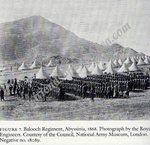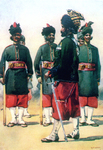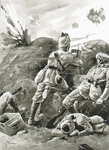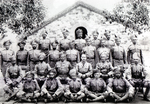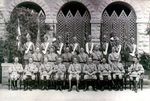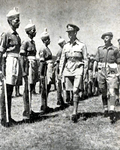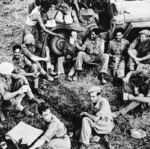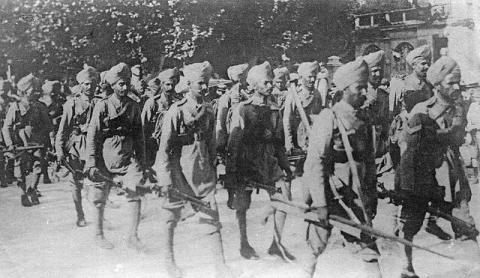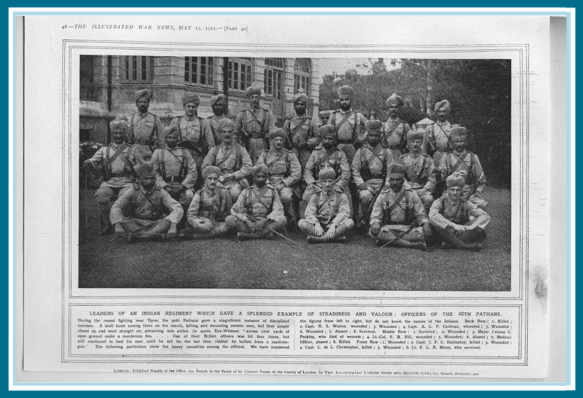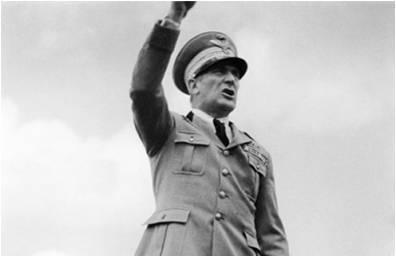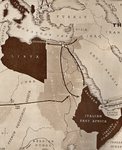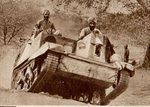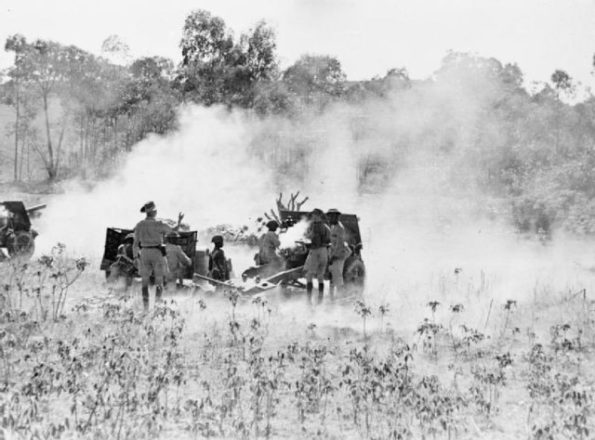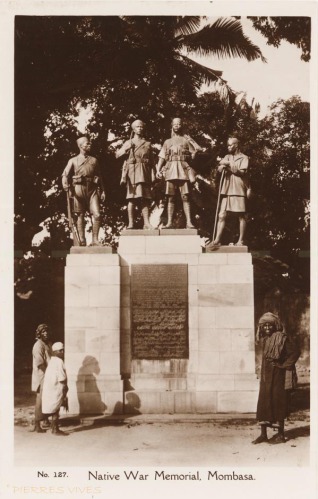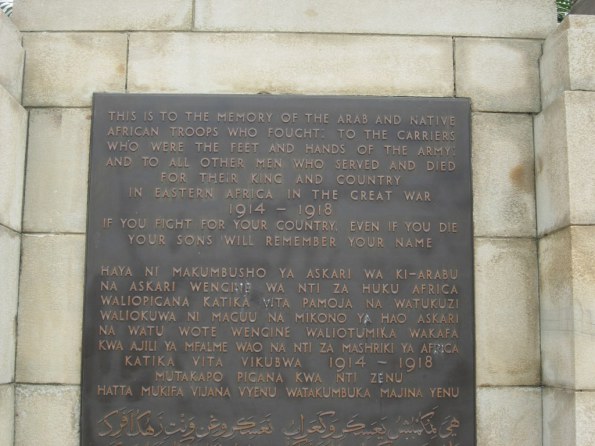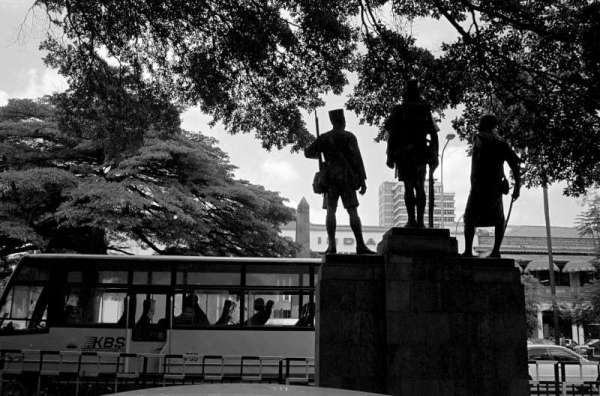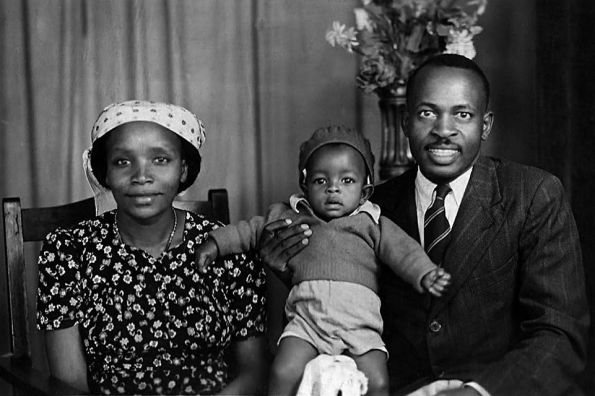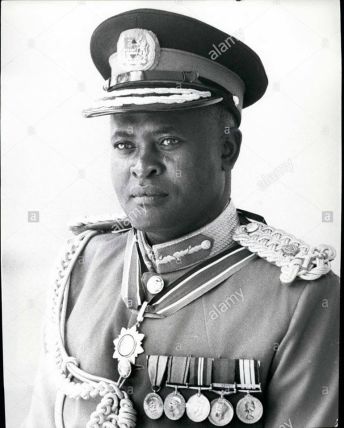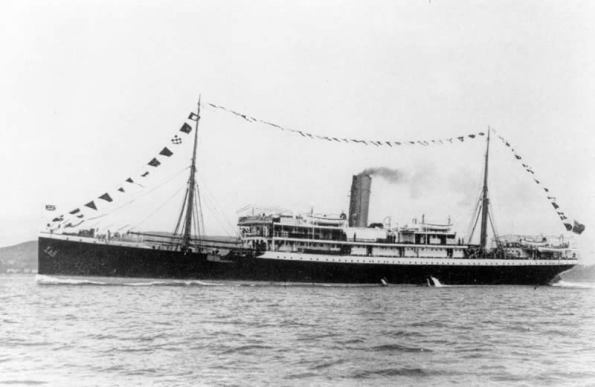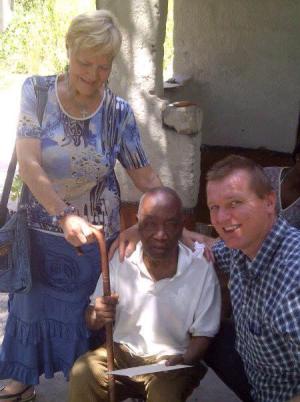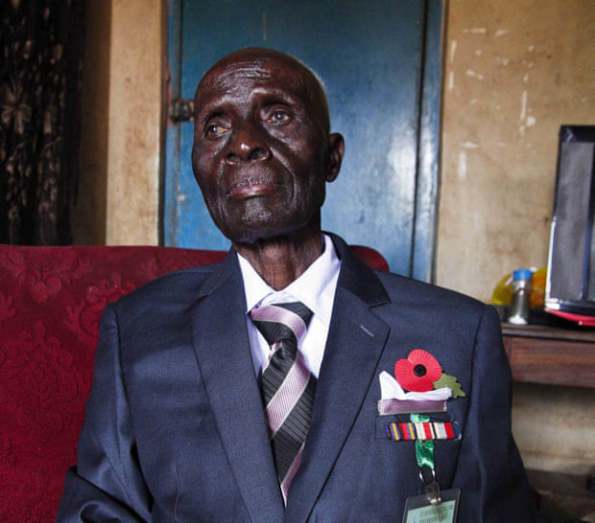HISTORY OF BALOCH REGIMENT
The Baloch Regiment is an infantry regiment of Pakistan Army. The modern regiment was formed in May 1956 by the merger of 8th Punjab and Bahawalpur Regiments with the Baluch Regiment. Since then, further raisings have brought the strength of the Regiment to more than fifty battalions.
https://en.wikipedia.org/wiki/Baloch_Regiment
HISTORY OF BALOCH REGIMENT
http://www.pakarmymuseum.com/exhibits/history-of-baloch-regiment/
https://en.wikipedia.org/wiki/127th_Baluch_Light_Infantry
British Expedition to Abyssinia
The British Expedition to Abyssinia was a rescue mission and punitive expedition carried out in 1868 by the armed forces of the British Empire against the Ethiopian Empire. Emperor Tewodros II of Ethiopia, then known as Theodore, imprisoned several missionaries and two representatives of the British government in an attempt to get the attention of the British government, which had decided against his requests for military assistance.
https://en.wikipedia.org/wiki/British_Expedition_to_Abyssinia
CWGC (Commonwealth War Graves Commission)
Forever India
http://www.cwgc.org/foreverindia/stories/khudadad-khan-ghulam-haider-hollebke-east-africa.php
AN EAST AFRICAN
VICTORIA CROSS
Lieut. Wilbur Dartnell V.C.
http://www.hellfirecorner.co.uk/dartnell.htm
Notably, here was the later recommendation for another such award, due to go to Subedan Ghulam Haidar, who commanded the 130th Baluchis, for his bravery to save General Malleson on May 5, 1915 at the expense of his own life “overlooked” and never ratified, since then a badge of shame for many on the British Armed Forces to have so blatantly shafted aside Haidar’s sacrifice, long suspected to be entirely due to his origin and nothing at all to do with his bravery.
http://www.eturbonews.com/29871/battlefield-east-africa-98-years-and-counting
http://www.eturbonews.com/29871/battlefield-east-africa-98-years-and-counting
Muslim Soldiers WW1
http://asianlite.com/news/uk-news/call-to-remember-muslim-troops-in-ww-i/
Lord Ahmad leads tributes to the bravery of a World War One hero
https://www.gov.uk/government/news/lord-ahmad-leads-tributes-to-the-bravery-of-a-world-war-one-hero
Manta Singh and the battle of Neuve Chapelle
http://www.cwgc.org/foreverindia/stories/manta-singh-neuve-chapelle.php
Welcome to Kaiser’s Cross
http://www.kaiserscross.com/40020.html
The Ugandan Railway Volunteer Reserves,
1914
At the outbreak of the Great War in August 1914 there was another armed military unit in the British East Africa
Protectorate as well as the King’s African Rifles. This other unit was the Uganda Railway Volunteer Reserve.
http://www.kaiserscross.com/188001/293122.html
The Battle of El Alamein WW2
Fact File : First Battle of El Alamein
1-4 July 1942
Theatre: North Africa
Area: Around the Egyptian town of El Alamein, 100km (60 miles) west of Alexandria.
Players: Allies: General Claude Auchinleck's 8th Army consisting of 30th Corps, 13th Corps and 10th Corps (British, Australian, South African, Indian, New Zealand and French troops). Axis: Field Marshal Erwin Rommel's Panzer Armee Afrika (German and Italian troops).
Outcome: Allies halt Axis drive into Egypt. This was followed by a tense stand-off lasting until the Second Battle of El Alamein, with neither army giving up much ground.
http://www.bbc.co.uk/history/ww2peopleswar/timeline/factfiles/nonflash/a1057691.shtml
Second Battle of El Alamein
- Theatre: North Africa
- Dates: 23 October to 4 November 1942
- Location: Around the Egyptian town of El Alamein, 100km (60 miles) west of Alexandria
- Outcome: Allied victory, forcing Rommel to retreat into Tunisia.
- Note: Three hundred Sherman tanks that were hastily shipped to Egypt from the USA were a crucial influence on the outcome of this battle. The tanks gave Montgomery a significant advantage in firepower
- Players:
- Allies: General Bernard Montgomery's 8th Army, consisting of 30th Corps, 13th Corps and 10th Corps (British, Australian, South African, Indian and French troops)
- Axis: Field Marshal Erwin Rommel's Panzerarmee Afrika (German and Italian troops)
http://www.bbc.co.uk/history/worldwars/wwtwo/ff5_second_alamein.shtml
CONDEMNATION OF ITALIAN MEMORIAL TO WAR CRIMINAL
Field Marshal Rodolfo Graziani: Responsible for the Genocide of One Million Ethiopians
This is Field Marshal Rodolfo Graziani, The Butcher of Ethiopia. The Global Alliance for Justice – The Ethiopian Cause condemns in the strongest terms the Italian government’s construction of an official memorial to the convicted war criminal Field Marshal Rodolfo Graziani. During the Italian war on Ethiopia 1936-1941, Italy carried out a systematic mass extermination campaign in Ethiopia with poison gas sprayed from airplanes and other horrific atrocities that claimed the lives of no less than 1,000,000 Ethiopian men, women and children, including 30,000 massacred in only three days in Addis Ababa as well as the reprisal killings of the entire monastic community at the historic Debre Libanos Monastery. In addition, 2,000 churches and 525,000 homes were destroyed by the Italian Fascists. These atrocities were carried out under the direct command of Graziani known as the Butcher of Ethiopia.
http://ecadforum.com/blog1/condemnation-of-italian-memorial-to-war-criminal/
East African campaign (World War I)
Campaign history
In 2001, Hew Strachan estimated that British losses in the East African campaign were 3,443 killed in action, 6,558 died of disease and c. 90,000 African porters dead.[59] In 2007, Paice recorded c. 22,000 British casualties in the East African campaign, of whom 11,189 died, 9 percent of the 126,972 troops in the campaign. By 1917, the conscription of c. 1,000,000 Africans as carriers, depopulated many districts and c. 95,000 porters had died, among them 20 percent of the Carrier Corps in East Africa.[60] Of the porters who died, 45,000 were Kenyan and 13 percent of the male population. The campaign cost the British Empire £70 million, close to the British war budget in 1914.[61][62] A Colonial Office official wrote that the East African campaign had not become a scandal only "... because the people who suffered most were the carriers - and after all, who cares about native carriers?".[63] The Belgian record of 5,000 casualties includes 2,620 soldiers killed in action or died of disease but excludes 15,650 porter deaths.[64] Portuguese casualties in Africa were 5,533 soldiers killed, 5,640 troops missing or captured and an unknown but significant number wounded.[65]
Memorial to the German soldiers killed during the campaign in Iringa, Tanzania
In the German colonies, no records of the number of people conscripted or casualties were kept but in Der Weltkrieg, the German official history, Ludwig Boell (1951) wrote "... of the loss of levies, carriers, and boys (sic) [we could] make no overall count due to the absence of detailed sickness records". Paice wrote of a 1989 estimate of 350,000 casualties and a death rate of 1-in-7 people. Carriers were rarely paid and food and cattle were requisitioned from civilians; a famine caused by the subsequent food shortage and poor rains in 1917 led to another 300,000 civilian deaths in German East Africa. The conscription of farm labour in British East Africa and the failure of the 1917–1918 rains, led to famine and in September the 1918 flu pandemic reached sub-Saharan Africa. In British East Africa 160,000–200,000 people died, in South Africa there were 250,000–350,000 deaths and in German East Africa 10–20 percent of the population died of famine and disease; in sub-Saharan Africa, 1,500,000–2,000,000 people died in the flu epidemic.[66]
https://en.wikipedia.org/wiki/East_African_campaign_(World_War_I)
The Fifth Indian Division led by General Heath
The Battle of Keren (or Cheren) was fought as part of the East African Campaign during the Second World War. The battle was fought from 5 February to 1 April 1941 between a mixed Italian army of regular and colonial troops and the attacking British, Commonwealth, and Free French forces. The town of Keren, located in the Italian colony of Eritrea, was of strategic importance to both the Italian and the British-led forces in 1941.
Battle of Madagascar
Kings African Rifles’ 25 pdr battery in action against Vichy positions near Ambositra.
Battle of Madagascar
When most people think of World War II and the wide array of geographical spots the war reached, they don’t generally think of Madagascar. However, this island off of the coast of Africa saw military action too.
The Battle of Madagascar took place there in 1942, and was led by the British, as they tried to capture the area from the French.
The battle heavily revolved around Antsiranana Bay. This important port lies around the northern tip of Madagascar and opens to the east with a pass.
A century before, in the late 1800s, the French had claimed the bay as a coaling station for steamships. Then, they colonized the area in 1885, making the surrounding area and then the entire island into French Madagascar.
During World War II, as Japan moved west through Asia, they sent out their submarines through the Indian Ocean. This caused British ships to move toward the eastern shore of Africa, out of Southeast Asia. However, being in Africa made the British worry that they would be subject to Japanese attacks based out of Madagascar.
https://www.warhistoryonline.com/whotube-2/who-tube-dick-winters-hang-tough.html
https://prezi.com/o3ibhnw5l1vg/the-battle-of-madagascar/
Boris Johnson offers ‘unreserved apology’ over war graves racism finding
The Prime Minister said he was “deeply troubled” by the investigation
The askari memorial in Makupa road doesn't attract much attention nowadays. Only country folk gaze at the sculpture. But whenever I pass by I always admire the bronze figures; they look so real.
I remember a moving incident on the day they were unveiled. When all the bigwigs had finished their say, and the police askaris had presented arms and departed, an admiring crowd was left in front of the memorial, among them an old lady. She wanted to see what all the fuss was about, as old ladies of any colour will. And so she pushed forward through the jostling throng to the foot of the plinth. Looking upwards she saw something almost impossible to believe, for there stood her soldier son, who, she had been told, had died in the war. She let out a wail of delight. Holding up her skinny old arms she called to him to come down, and come home. But he neither looked at her nor answered. The kindly folks around who understood, explained to her, and gently led the lonely old mother away.
King’s African Rifles (Nubians)
Sudanese soldiers were incorporated into the British Army in the late 1880s and brought to Kenya in the early 1900s.
http://nubiansinkenya.photoshelter.com/gallery/Kings-African-Rifles/G0000W.8J6wBNQME/
The Story Behind The Galton Fenzi Memorial
http://www.theeagora.com/the-story-behind-the-galton-fenzi-memorial/
Voi War Cemetery
http://www.theeagora.com/voi-war-cemetery/
Mr.Wachira
http://www.theeagora.com/mr-wachira/
Kariokor the war Cemetery
When World War ll erupted in Europe, Bildad Kaggia left his peaceful village in Muranga to fight for the British Empire.
After the war he returned with inspiration to launch another war for freedom against colonial rule.
Kaggia was among millions of Africans who served in the war they did not understand, but gained experiences that enabled them to unleash a force that hastened the death of colonialism.
As Kaggia would later say, " We were led to believe Europeans were superior."
"But we who served in the war had evidence that the Europeans are just like us. He was killed in the war,and we saw him working in every job we did, " added Kaggia whose journey to Cairo in 1940, was his first outside Kenya.
In the last year of the war there were around 400, 000 African soldiers serving the British alone. They served on the battlefield and boosted war time production by working on plantations and public works.
Africans, some who had never been out of their reserves, encountered strange lands, different climates, and modern ways of travel.
"I had never been inside a plane or ship and the experience of being inside those things was unbelievably overwhelming," said another WWII veteran M'Kabui M'namba.
However having risked their lives to help Europe fight off fascism, Africans returned to their countries where they needed passes to travel and were denied the right to vote.
According to Kaggia, while serving abroad he got the same pay as whites of the same rank. He was shocked to return to post-war Kenya where Africans got less.
He quit the military and joined a radical nationalist movement that believed only force would persuade British to leave.
",It was the courage we got from the war which made us go into the struggle", Kaggia said. "The people who were here couldn't think that they could defeat Europeans."
Kaggia served in Mau Mau central committee until 1952 when he was arrested following the declaration of the State of Emergency.
After independence he became a parliamentarian but kept his fighting spirit. He later fell out with Jomo Kenyatta and joined Odinga's KPU.
What if WWII never touched his life ? "I would have lived like the other people here," Kaggia said softly.
Jackson Mulinge never wanted to be a soldier. He had gone to Machakos as an 18 year old in 1940 to sell chicken and buy a pair of shorts, when a European recruiting officer grabbed
him.
During World War ll, he fought in Burma and in the battle of Tripoli. Because of his distinguished service he was made a Warrant Officer in the Kings African Rifles and appointed a regimental
sergeant major.
The first Lancaster Conference which took place in 1960, set Kenya on a path to independence. The wind of change that was sweeping across Africa meant Africans had to be prepared to take charge of
their own affairs.
In 1961 Mulinge was commissioned as a Lieutenant and rose through the ranks to become a Major. On the day of independence 12 Dec 1963, he was appointed a Lieutenant Colonel, making him the first
Kenya African to hold the rank.
A few hours earlier at midnight, he had commanded the guard in a ceremony that saw the Union Jack being owered for the last time, and Kenyan flag being raised for the first time.
One quick response of the 1964 mutinies across East Africa was the promotion of Africans to take charge of battalions. African soldiers had mutinied to demand better pay and the removal of British
officers.
In Uganda after the mutiny at Gulu Barracks, Lieutenant Colonel Idi Amin was appointed the commanding officer of the two Battalions of Uganda Rifles.
In Tanganyika an African captain was put in charge of the 1st Battalion the Tanganyika Rifles.
In Kenya, Mulinge was made the commanding officer of the 3rd Battalion Kenya Rifles after the mutiny at Lanet He rose to become the Deputy Army commander, commander, and finally Chief of General
Staff.
On the night of 21 February 1917, more than 600 men of the South African Native Labour Corps (SANLC) lost their lives in the sinking of the SS Mendi- the largest single loss of life for the non-combatants in the SANLC during the First World War.
https://www.iwm.org.uk/history/why-the-sinking-of-the-ss-mendi-is-remembered-around-the-world
Courageous warrior Officer Daimon Mwete forgotten by his government leaves a legend behind for us all to remember and appreciate.
With sad regret we say farewell to Warrant Officer Daimon Mwete who passed away today. Let us not forget the sacrifices made by the Northern Rhodesia Regiment. Rest in peace Sir.
Warrant Officer Daimon Mwete who served in the 1st Battalion Northern Rhodesian Kings African
Rifles from 1939 to 1960. He was Born in Malawi and came to Zambia as a little boy with his parents. He fought in North African with the 8th Army with Montgomery. In Egypt, Somalia, Ethiopia.
Madagascar. Ceylon, India, Burma, Malaya. Station in Iraq, Poland. Singapore. Tokyo. A remarkable record service to the British Crown. He was trained in special Jungle ambush tactics in Burma against
the Japanese Imperial Army. His platoon was used many times to infiltrate behind Japanese lines in Burma.
In Malaya during the Malaysian Emergency he was in charge of special unit of African KAR troops that managed to ambush the ring leader of Chinese Communists, after waiting for them in hiding in
Jungle for almost one week.
In Tokyo he was stationed there from October 1945 to April 1946. He would share is food rations with the homeless orphan little Japanese children who lost their parents in the. American B29 bombings
on Tokyo. The orphan Japanese grew to love him. But it was he who was begging for food and asking for help of food and blankets, cloths, and roof sheets for his house that was falling down.
A sad story indeed that such a brave old warrior should be forgotten by his governments and people of this generation. A man who saw all his friends die in Battle.
Black British Soldiers – The Forgotten Fighters
http://www.blackpresence.co.uk/black-british-soldiers-the-forgotten-fighters/
Nigerians made up more than half of the total force of 90,000 West African soldiers deployed to south east Asia after 1943, as part of the British army’s 81st and 82nd (West Africa) Divisions. But while the role of Indians and Gurkhas in the campaign to drive the Japanese out of Burma is well-known, allied commander General William Slim did not mention the African soldiers in his speech thanking the 14th army.
http://news.bbc.co.uk/1/hi/world/africa/8201717.stm
http://www.history.ac.uk/reviews/review/1009
http://new.spectator.co.uk/2014/09/another-mans-war-by-barnaby-phillips-review/
THE NATIVE SCOUTS OF THE 2nd BATTALION THE RHODESIA REGIMENT
More Links
https://gm1914.wordpress.com/2014/01/25/indian-troops-in-world-war-one/
http://battlefields1418.50megs.com/uniforms_ww1.htm
http://www.patriotfiles.com/forum/showthread.php?t=110040
http://www.bbc.co.uk/programmes/p02ngjv6
Misremembered history: the First World War in East Africa
http://www.britishcouncil.org/blog/misremembered-history-first-world-war-east-africa
Britain's belated reckoning with imperial crimes
Britain could not have won World War II without the massive exploitation and abuse it unleashed on its colonies.
https://www.aljazeera.com/indepth/opinion/britain-belated-reckoning-imperial-crimes-190221084941543.html?fbclid=IwAR235OyZl92-FlsTZTCCPETAIiF44JeWKCJ4W-WAkKyhX9bGnQufYs98ewo
How Britain dishonoured its African first world war dead
Britain’s Abandoned Black Soldiers
More than 600,000 Africans fought for Britain in World War II. Now they want a fair deal.
https://foreignpolicy.com/2019/02/23/britains-abandoned-black-soldiers/
Africa's forgotten World War II veterans
More than a million African soldiers served in colonial armies in World War II. Many veterans experienced prejudice during the war and little gratitude or compensation for their services afterwards.
https://www.dw.com/en/africas-forgotten-world-war-ii-veterans/a-53358115
https://www.aljazeera.com/program/episode/2019/2/13/the-forgotten-heroes-of-empire/
The forgotten Indian troops in the Anglo-Boer war, 1899 – 1902
Rest in peace Jaston Khosa , one of 600,000 men often forgotten from African countries who fought for Britain. He was quietly buried on VE Day.
His daughter, M’tundu Khosa wrote: “Young man, you were a soldier. You are still a soldier to me. You have fought for your health till the last hour. My hero, always. My father died a proud soldier.
He would always talk about his war experiences. He was a strong, beautiful man and a friend to everyone, regardless of who they were. We will always remember him and we will meet on the other
side.”
https://www.theguardian.com/global-development/2020/may/10/you-are-still-a-soldier-to-me-the-forgotten-african-hero-of-britains-colonial-army?CMP=twt_gu
Thank you Jaston for your service. ❤️
The Battle for Latema-Reata Nek, British East Africa, 11 - 12 March 1916 -
British & German East Africa
The Old and the Bold
January to May 1916
http://www.25throyalfusiliers.co.uk/british_german_east_africa_1.html
http://rebelblackdot.blogspot.co.uk/2016/03/the-explorers-club-cdlxxxix.html
East Africa 1914-17
http://www.kaiserscross.com/96801/547885.html
The 2nd Battalion The Loyal North Lancashire Regiment in East Africa 1914-1917
http://www.kaiserscross.com/188001/437364.html
http://www.kaiserscross.com/96801/550401.html
http://www.kaiserscross.com/188001/547843.html
http://www.bbc.co.uk/news/world-africa-28836752


